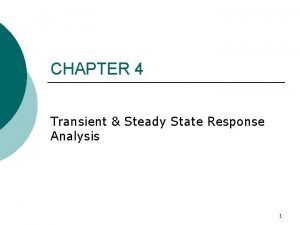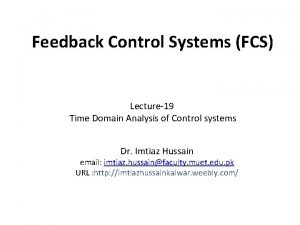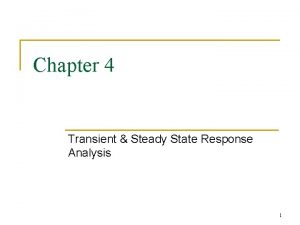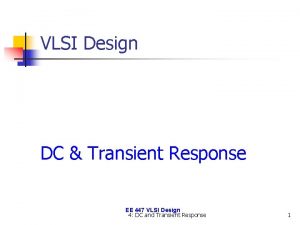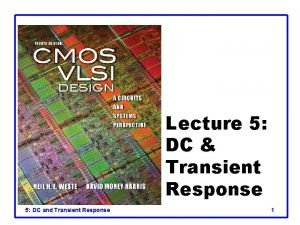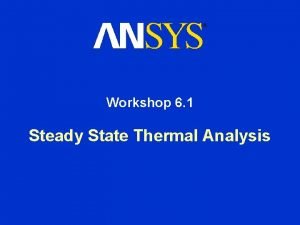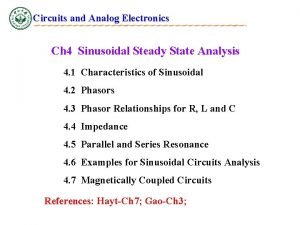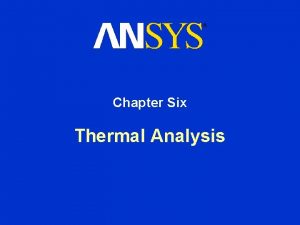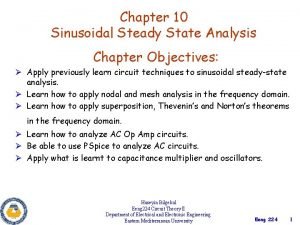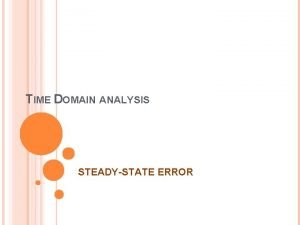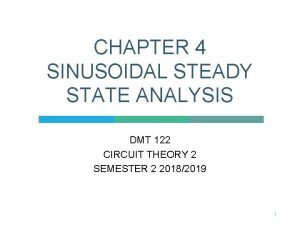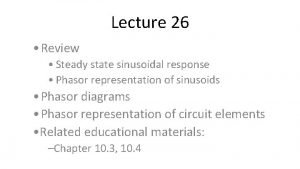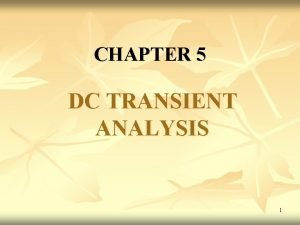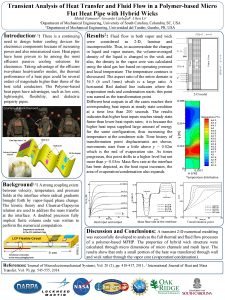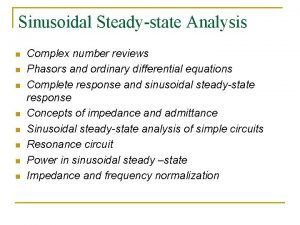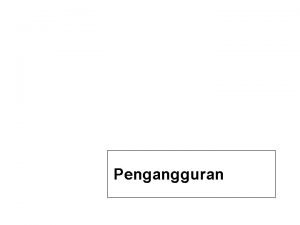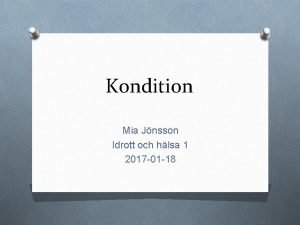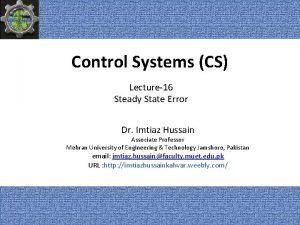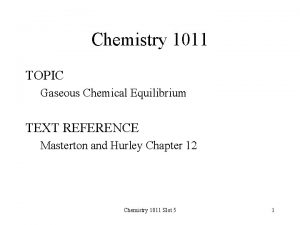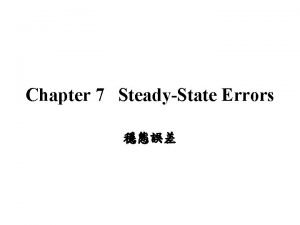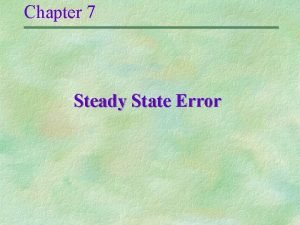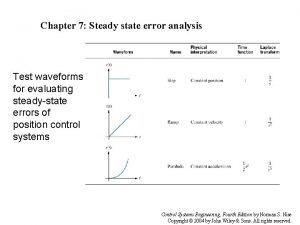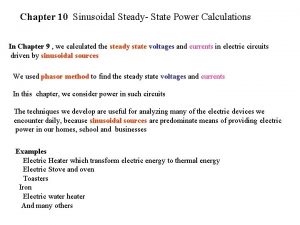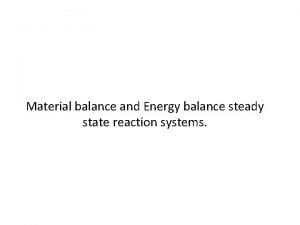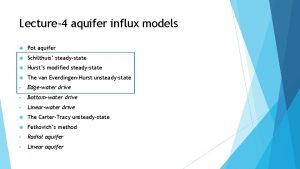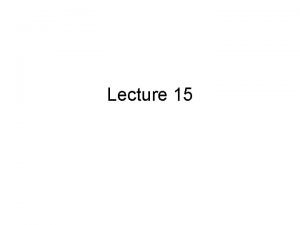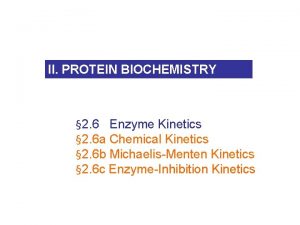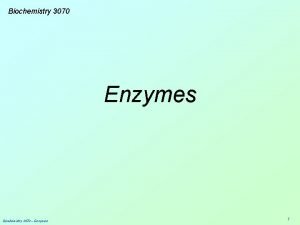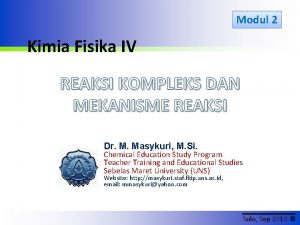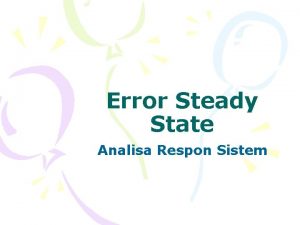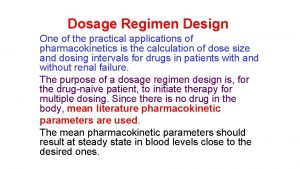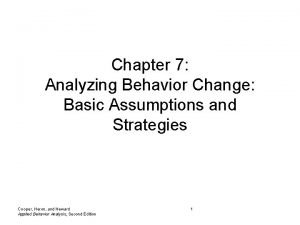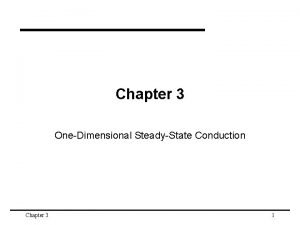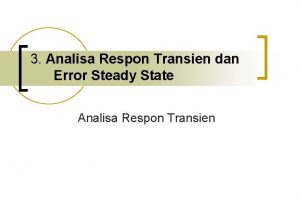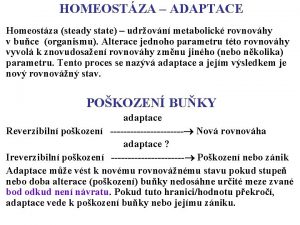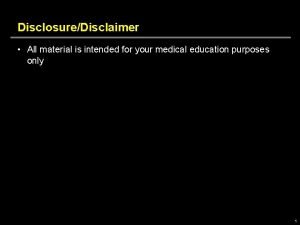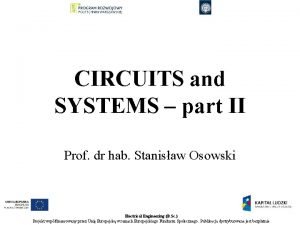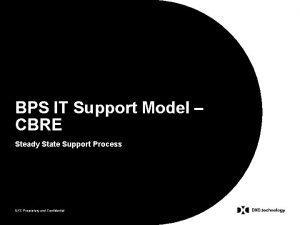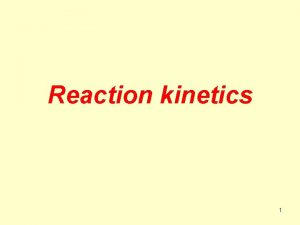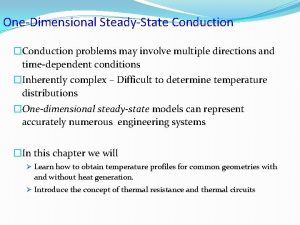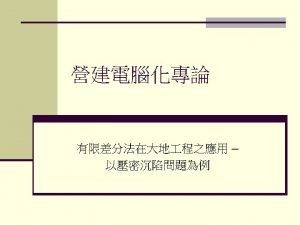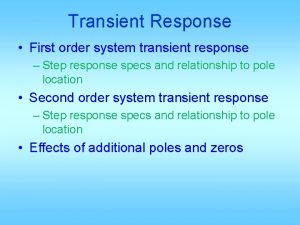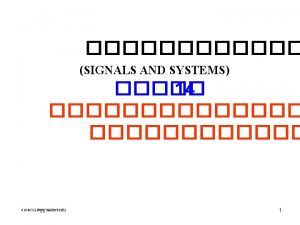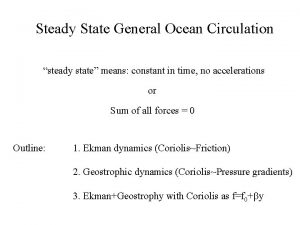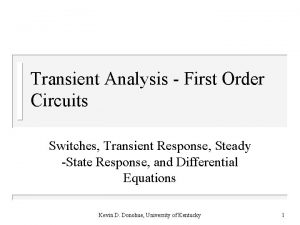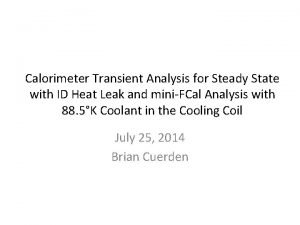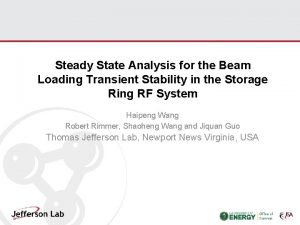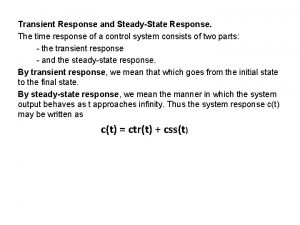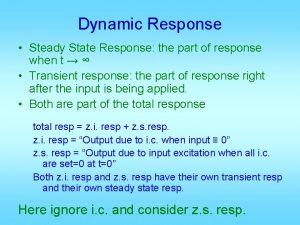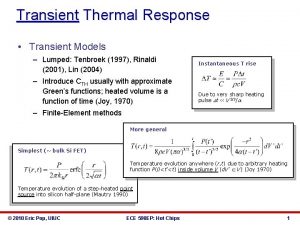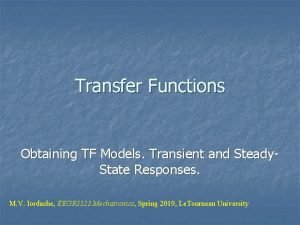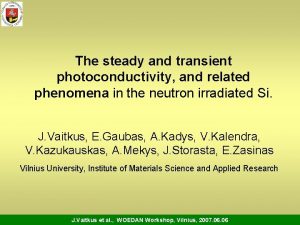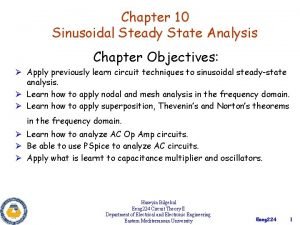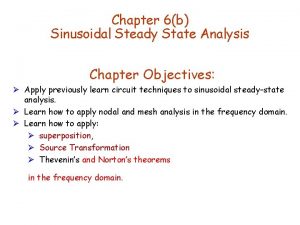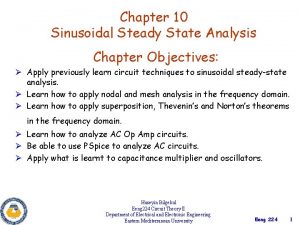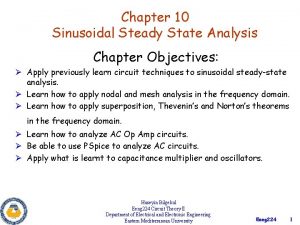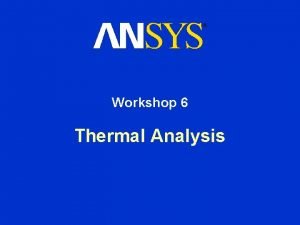CHAPTER 4 Transient Steady State Response Analysis 1














































- Slides: 46

CHAPTER 4 Transient & Steady State Response Analysis 1

Previous Class ¡ In Chapter 3: l l Block diagram reduction Signal flow graphs (SFGs) Transfer Function 2

Today’s class ¡ Chapter 4 – Transient & Steady State Response Analysis l l First Order System Second Order System 3

Learning Outcomes ¡ At the end of this lecture, students should be able to: l l l Identify between transient response & steady state response Obtain the transfer function for a first order system based on graph analysis To become familiar with the wide range of response for second order systems 4

In Chapter 4 What you are expected to learn : Routh-Hurwitz Criterion First order system Chapter 4 Steady-state error Second order system 5

Introduction The time response of a control system consists of two parts: 1. Transient response 2. Steady-state response - from initial state to the final - the manner in which the state – purpose of control system output behaves as t systems is to provide a desired approaches infinity – the error response. after the transient response has decayed, leaving only the continuous response. 6

Introduction Transient Steady-state 7

Performances of Control Systems ¡ Specifications (time domain) l ¡ Max OS, settling time, rise time, peak time, Standard input signals used in design l l actual signals unknown standard test signals: ¡ step, ramp, parabola, impulse, etc. sinusoid l ¡ ¡ ¡ (study freq. response later) Transient response Steady-state response Relate to locations of poles and zeros 8

First Order System R(s) E(s) C(s) Test signal is step function, R(s)=1/s 9

First – order system A first-order system without zeros can be represented by the following transfer function • Given a step input, i. e. , R(s) = 1/s , then the system output (called step response in this case) is 10

First – order system Taking inverse Laplace transform, we have the step response Time Constant: If t= , So the step response is C( ) = (1− 0. 37) = 0. 63 is referred to as the time constant of the response. In other words, the time constant is the time it takes for the step response to rise to 63% of its final value. Because of this, the time constant is used to measure how fast a system can respond. The time constant has a unit of seconds. 11

First – order system Plot c(t) versus time: 12

First – order system Example 1 The following figure gives the measurements of the step response of a first-order system, find the transfer function of the system. 13

First – order system Transient Response Analysis Rise Time Tr: The rise-time (symbol Tr units s) is defined as the time taken for the step response to go from 10% to 90% of the final value. Settling Time Ts: Defined the settling-time (symbol Ts units s) to be the time taken for the step response to come to within 2% of the final value of the step response. 14

First – order system 15

Second – Order System Ø Second-order systems exhibit a wide range of responses which must be analyzed and described. • Whereas for a first-order system, varying a single parameter changes the speed of response, changes in the parameters of a second order system can change the form of the response. Ø For example: a second-order system can display characteristics much like a first-order system or, depending on component values, display damped or pure oscillations for its transient response. 16

Second – Order System - A general second-order system is characterized by the following transfer function: - We can re-write the above transfer function in the following form (closed loop transfer function): 17

Second – Order System - referred to as the un-damped natural frequency of the second order system, which is the frequency of oscillation of the system without damping. - referred to as the damping ratio of the second order system, which is a measure of the degree of resistance to change in the system output. Poles; Poles are complex if ζ< 1! 18

Second – Order System - According the value of ζ, a second-order system can be set into one of the four categories: 1. Overdamped - when the system has two real distinct poles (ζ >1). 2. Underdamped - when the system has two complex conjugate poles (0 <ζ <1) 3. Undamped - when the system has two imaginary poles (ζ = 0). 4. Critically damped - when the system has two real but equal poles (ζ = 1). 19

Time-Domain Specification Given that the closed loop TF The system (2 nd order system) is parameterized by ς and ωn For 0< ς <1 and ωn > 0, we like to investigate its response due to a unit step input Two types of responses that are of interest: (A)Transient response (B)Steady state response Transient Steady State 20

(A) For transient response, we have 4 specifications: (a) Tr – rise time = (b) Tp – peak time = (c) %MP – percentage maximum overshoot = (d) Ts – settling time (2% error) = (B) Steady State Response (a) Steady State error 21

Question : How are the performance related to ς and ωn ? - Given a step input, i. e. , R(s) =1/s, then the system output (or step response) is; - Taking inverse Laplace transform, we have the step response; Where; or 22

Second – Order System Mapping the poles into s-plane 23

Lets re-write the equation for c(t): Let: and Damped natural frequency Thus: where 24

Transient Response Analysis 1) Rise time, Tr. Time the response takes to rise from 0 to 100% 25

Transient Response Analysis 2) Peak time, Tp - The peak time is the time required for the response to reach the first peak, which is given by; 26

We know that So, From this expression: 27

Transient Response Analysis 3) Percent overshoot, %OS - The percent overshoot is defined as the amount that the waveform at the peak time overshoots the steady-state value, which is expressed as a percentage of the steady-state value. OR

From slide 24 29

Therefore, - For given %OS, the damping ratio can be solved from the above equation; 30

Transient Response Analysis 4) Setting time, Ts - The settling time is the time required for the amplitude of the sinusoid to decay to 2% of the steady-state value. To find Ts, we must find the time for which c(t) reaches & stays within +2% of the steady state value, cfinal. The settling time is the time it takes for the amplitude of the decaying sinusoid in c(t) to reach 0. 02, or Thus, 31

UNDERDAMPED Example 2: Find the natural frequency and damping ratio for the system with transfer function Solution: Compare with general TF • ω n= 6 • ξ =0. 35 32

UNDERDAMPED Example 3: Given the transfer function Solution: 33

UNDERDAMPED 34

Overdamped Response a=9 s= 0; s = -7. 854; s = -1. 146 ( two real poles) 35

OVERDAMPED RESPONSE !!! 36

Underdamped Response a=3 s = 0; s = -1. 5 ± j 2. 598 ( two complex poles) 37

UNDERDAMPED RESPONSE !!! 38

Undamped Response a=0 s = 0; s = ± j 3 ( two imaginary poles) 39

UNDAMPED RESPONSE !!! 40

Critically Damped System a=6 S = 0; s = -3, -3 ( two real and equal poles) 41

CRITICALLY DAMPED RESPONSE !!! 42

Second – Order System 43

44

Effect of different damping ratio, ξ Increasing ξ 45

Second – Order System Example 4: Describe the nature of the second-order system response via the value of the damping ratio for the systems with transfer function Do them as your own revision 46
 Transient and steady state response analysis
Transient and steady state response analysis The impulse signal imitate the
The impulse signal imitate the Hurtwitz
Hurtwitz Transient response in vlsi
Transient response in vlsi Rw + vo c inverter transient response vod inverte...
Rw + vo c inverter transient response vod inverte... Settling time formula
Settling time formula Ansys steady state thermal
Ansys steady state thermal Complex impedances
Complex impedances What is steady-state thermal analysis?
What is steady-state thermal analysis? Sinusoidal steady state analysis practice problems
Sinusoidal steady state analysis practice problems Steadystate error
Steadystate error Sinusoidal steady state analysis
Sinusoidal steady state analysis Steady state sinusoidal analysis using phasors
Steady state sinusoidal analysis using phasors Dc transient analysis
Dc transient analysis Transient analysis thermodynamics
Transient analysis thermodynamics Sinusoidal steady state
Sinusoidal steady state Pengangguran dan sifat alamiahnya
Pengangguran dan sifat alamiahnya Steady state kondition
Steady state kondition Michaelis menten steady state
Michaelis menten steady state First law applied to flow process
First law applied to flow process In a normal operations/steady state eoc activation level
In a normal operations/steady state eoc activation level Position error constant in control system
Position error constant in control system Steady state vs equilibrium
Steady state vs equilibrium Michaelis menten steady state
Michaelis menten steady state Steady-state error
Steady-state error Steady state error for unity feedback system
Steady state error for unity feedback system Steady state error in control system
Steady state error in control system Sinusoidal steady state power calculations
Sinusoidal steady state power calculations Material balance definition
Material balance definition Schilthuis steady state model
Schilthuis steady state model Steady state approximation
Steady state approximation Competitive inhibition equation
Competitive inhibition equation What are 3 characteristics of enzymes
What are 3 characteristics of enzymes Elemental balance in bioprocess
Elemental balance in bioprocess Pendekatan steady state
Pendekatan steady state Error steady state adalah
Error steady state adalah Dosage regimen definition
Dosage regimen definition Baseline logic
Baseline logic One dimensional steady state heat conduction
One dimensional steady state heat conduction Error steady state adalah
Error steady state adalah Homeostza
Homeostza Steady state
Steady state Initially circuit is in steady state
Initially circuit is in steady state Steady state support
Steady state support Define steady state jog test
Define steady state jog test Steady state approximation
Steady state approximation Thermal conduction resistance
Thermal conduction resistance
